Edward Snape’s muscular preparation
The library is currently having a makeover which has meant emptying shelves and cupboards. One thing that has come out of its cupboard is a print titled ‘A muscular preparation of a horse with references.’
The inscription reads:
“To His most Excellent MAJESTY GEORGE III. King of Great Britain &c &c. This Plate is most humbly inscribed by His Majesty’s most faithfull (sic) Subject and Servant Edwd Snape Farrier to their Majesty’s & the 2nd Troop of the Horse Guards.
Published 15th April 1778 and sold by E. Snape in Berkeley Square”
Edward Snape 1728-18?? was a London based farrier who claimed to be a descendant of Andrew Snape of The Anatomy of an horse fame.
Little is known of him but he seems to have had a genuine desire to see his profession progress. In 1766 he proposed the establishment of a “hippiatric [horse] infirmary” as a school for the “instruction of pupils in the profession.” The school eventually came into existence in Knightsbridge in 1778.
There is a short account of the school in an ‘advertisement’ (which reads like an obituary though Snape was still alive and presumably the publisher knew this!) in the 2nd, 1805, edition of the Practical treatise on farriery (1st edition 1791) though it doesn’t actually say it opened – just that it was built. The ‘advertisement’ also makes the following claim “whatever benefit the Country now derives from the establishment of the Veterinary College, originated in him.”
Alongside the Practical treatise the print is the only other thing that Snape is known to have published. My research suggests that Snape’s print is based on an earlier one by Jeremiah Bridges. Looking at reproductions of the two prints side by side in the Veterinary History article the illustrations are remarkably similar though Snape has added labels (his ‘with references’). If it is true that Snape has copied an existing illustration then he would share a trait in common with his supposed ancestor Andrew Snape who used Carlo Ruini’s Anatomia del Cavallo as the basis for his work (for more information on Ruini’s work and Andrew Snape)
It would appear that the print I ‘found’ is not the first ‘edition’ as it has some minor changes to the inscription when compared to the earliest known copies. Luckily we also have a copy of the earlier printing (of which Wood says there are only 4 known copies)
One interesting thing about the early version of the print is that whilst it bears the date 1778 all the known copies are on paper bearing an 1808 watermark. I doubt we will ever know why that is the case. It could it be that it was prepared for use at the hippiatric infirmary but not actually printed until the later date. Or was it produced in 1808 but ‘back dated’ to give some credence to the claim that the benefits of the Veterinary College (now the Royal Veterinary College, founded 1791) originated in Snape?
Once the library is back in order I will give the two prints a proper outing and put them on display – do come and see them.
Update: See comments for further information on Snape
Bibliography
Smith, Frederick (1924) The Early history of veterinary literature and its British development Vol II. London: Bailliere, Tindall & Cox
Wood, John GP (2004) A tale of two prints: Jeremiah Bridges and Edward Snape Veterinary History Vol 12 no 2 pp 173-183

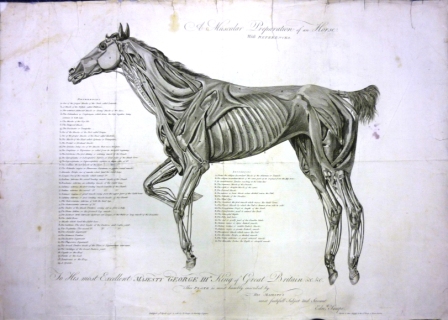
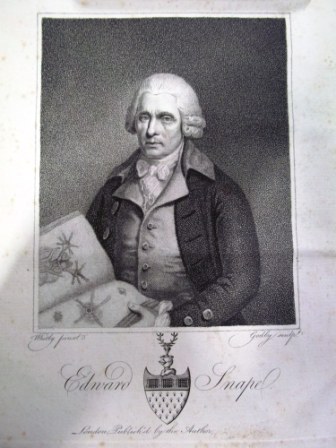
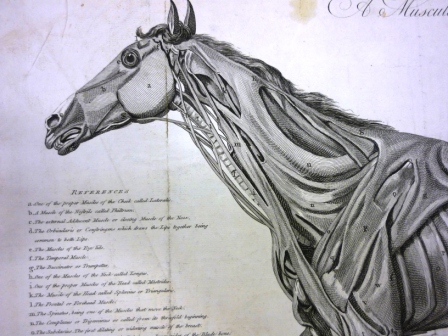
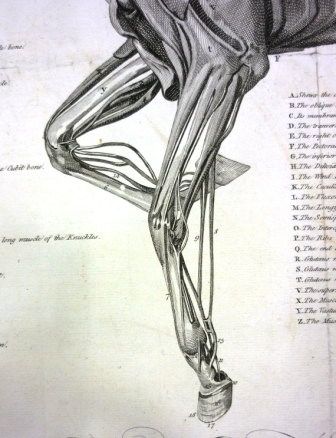
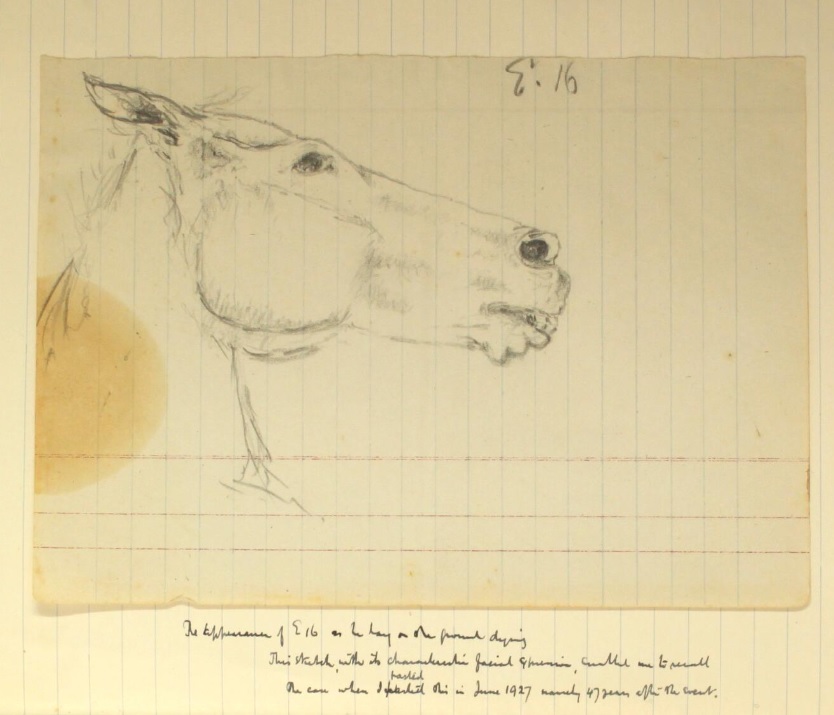
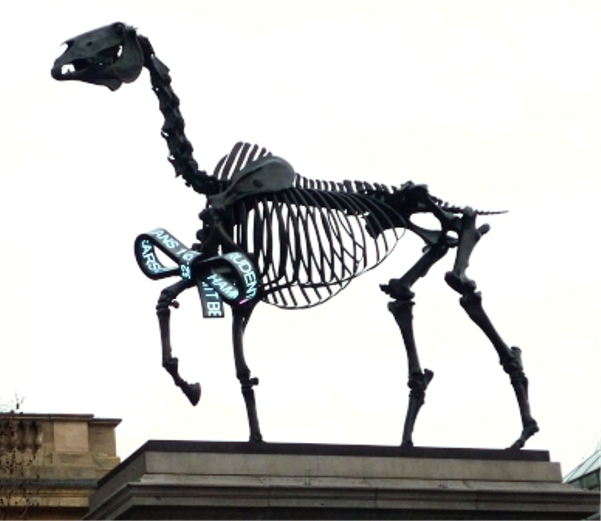
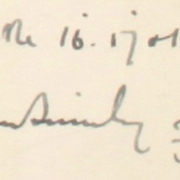
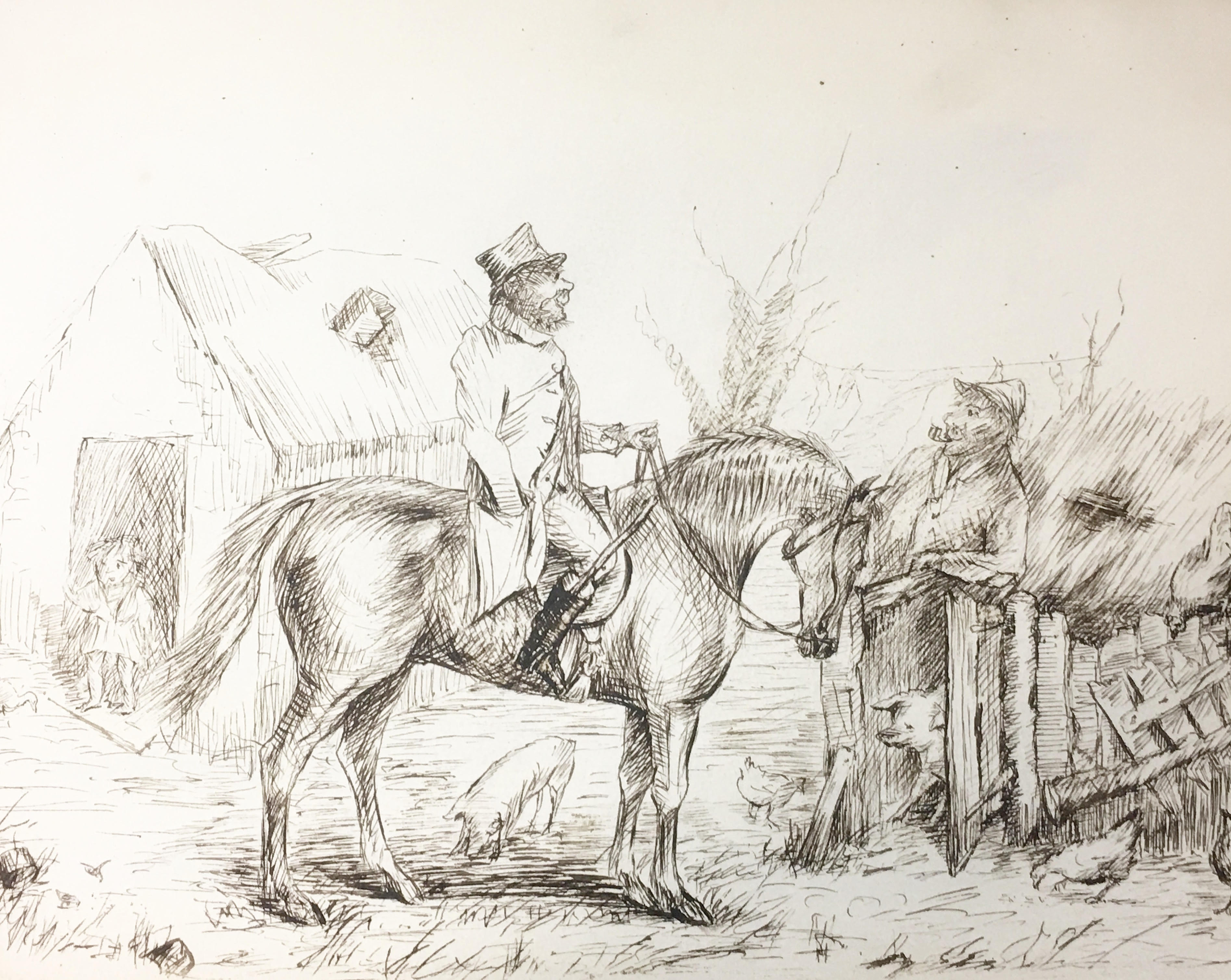
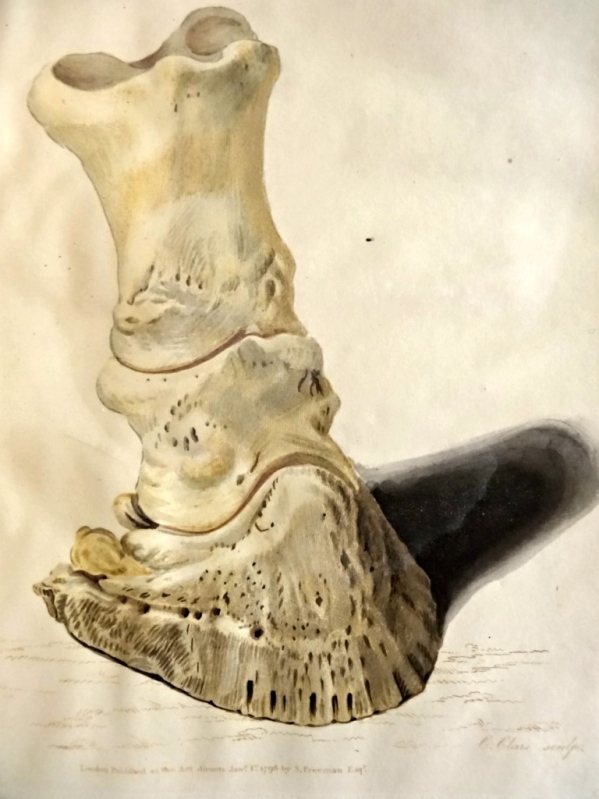
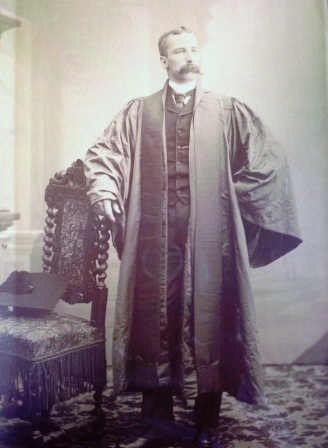
Fascinating stuff!
Mike MacKay, who wrote his PhD at York University (2009) on the medicalization of elite equine care, c1660-1800 sheds more light on Snape (who actually died in 1797). In fact his infirmary opened in 1765 and ran until 1778. It was funded by subscribers, mostly horse racers and breeders, to whom he advertised in the racing press. In the London Intelligencer, September 27–30, 1766, Snape published a description of the 254 cases he had treated at the infirmary in the previous year (224 were cured!). The infirmary was also a teaching institution, offering a ‘Course of Hippiatric Lectures, for the Instruction of Pupils in his Profession, who will be taught the Anatomy of the Horse, and the Virtues of the medical Drugs applicable on all Occasions; with the best manner of operating in every Circumstance; Besides the Art of docking, nicking, gelding &c. He will also give particular Instructions about the Foot of a Horse, and the manner of shoeing him in the best form.’
Snape declared himself bankrupt in 1780, but was running another dispensary and infirmary in London by 1790. In 1791 he opened ‘a seminary for the instruction of young men in the art of farriery’ in South Lambeth near Stockwell. It’s possible that this was still running at his death in 1797. While there isn’t any evidence of a direct connection between Snape and the London Veterinary College, his activities suggest that (contrary to the view advanced by most veterinary historians) the College did not represent a radical break with the past, but rather followed an existing trend. One could even argue that its main novelty lay in its use of the term ‘veterinary.’ Snape only ever referred to himself as a farrier.
This history supports your suggestion that the print was originally produced in 1778 for teaching purposes, although it doesn’t explain why Snape didn’t include it in his Practical Treatise in Farriery (1791), which represented the material taught at his infirmary.
Thanks for the comment and additional information.
The date of Snape’s death appears to be uncertain. John Lawrence in the 1796 edition of ‘A philosophical and practical treatise on horses’ refers to Snape as the late Edward Snape (p23) and then in the 1802 edition of the same book writes of Snape ‘I embrace this occasion of making the old Doctor amends for erroneously killing him with a word, in my first volume, by bringing him again to life in the present’ (p346) which implies Snape was still alive at the time Lawrence was preparing the later edition.
Wouldn’t it be interesting to find a description of Snape’s infirmary or evidence of it on a plan?
For the record your bibliography should read
WOOD, John GP (2004) A Tale of Two Prints: Jeremiah Bridges and Edward Snape Veterinary History Vol 12 No.2 pp.173-183
not Woods
with best wishes and in memory of John
SDM
Thank you. Corrected now. Clare